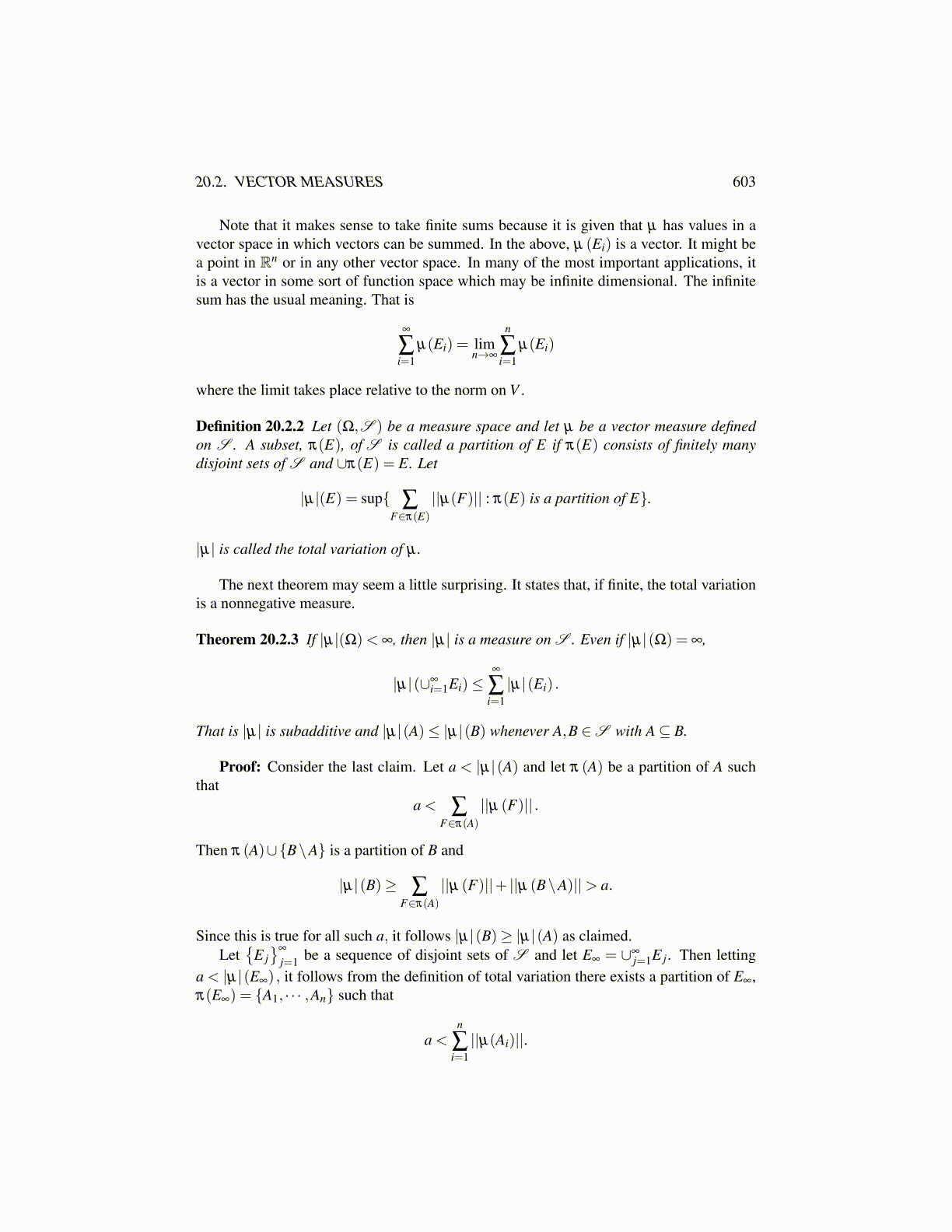
20.2. VECTOR MEASURES 603
Note that it makes sense to take finite sums because it is given that µ has values in avector space in which vectors can be summed. In the above, µ (Ei) is a vector. It might bea point in Rn or in any other vector space. In many of the most important applications, itis a vector in some sort of function space which may be infinite dimensional. The infinitesum has the usual meaning. That is
∞
∑i=1
µ(Ei) = limn→∞
n
∑i=1
µ(Ei)
where the limit takes place relative to the norm on V .
Definition 20.2.2 Let (Ω,S ) be a measure space and let µ be a vector measure definedon S . A subset, π(E), of S is called a partition of E if π(E) consists of finitely manydisjoint sets of S and ∪π(E) = E. Let
|µ|(E) = sup{ ∑F∈π(E)
||µ(F)|| : π(E) is a partition of E}.
|µ| is called the total variation of µ .
The next theorem may seem a little surprising. It states that, if finite, the total variationis a nonnegative measure.
Theorem 20.2.3 If |µ|(Ω)< ∞, then |µ| is a measure on S . Even if |µ|(Ω) = ∞,
|µ|(∪∞i=1Ei)≤
∞
∑i=1|µ|(Ei) .
That is |µ| is subadditive and |µ|(A)≤ |µ|(B) whenever A,B ∈S with A⊆ B.
Proof: Consider the last claim. Let a < |µ|(A) and let π (A) be a partition of A suchthat
a < ∑F∈π(A)
||µ (F)|| .
Then π (A)∪{B\A} is a partition of B and
|µ|(B)≥ ∑F∈π(A)
||µ (F)||+ ||µ (B\A)||> a.
Since this is true for all such a, it follows |µ|(B)≥ |µ|(A) as claimed.Let
{E j}∞
j=1 be a sequence of disjoint sets of S and let E∞ = ∪∞j=1E j. Then letting
a < |µ|(E∞) , it follows from the definition of total variation there exists a partition of E∞,π(E∞) = {A1, · · · ,An} such that
a <n
∑i=1||µ(Ai)||.